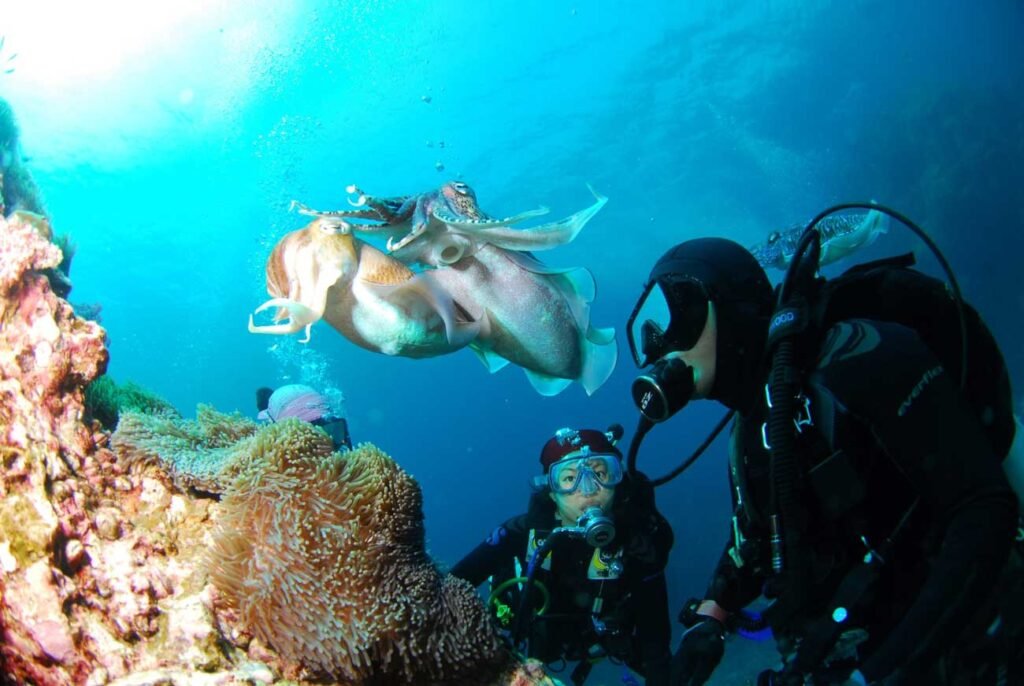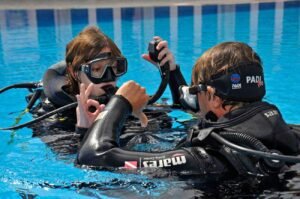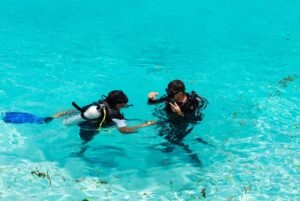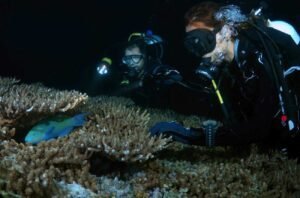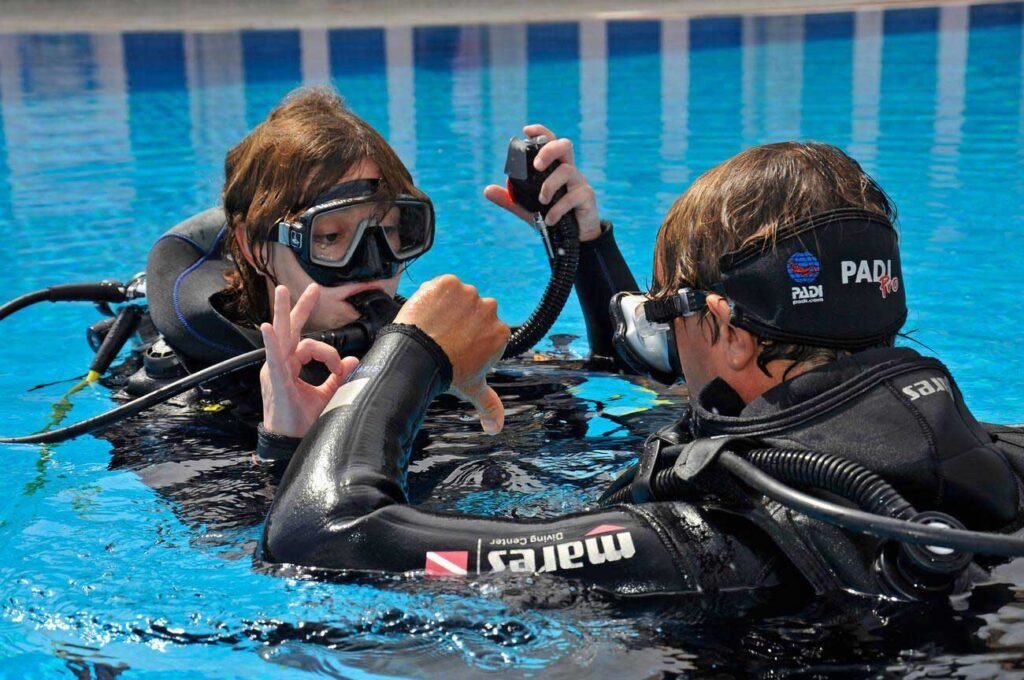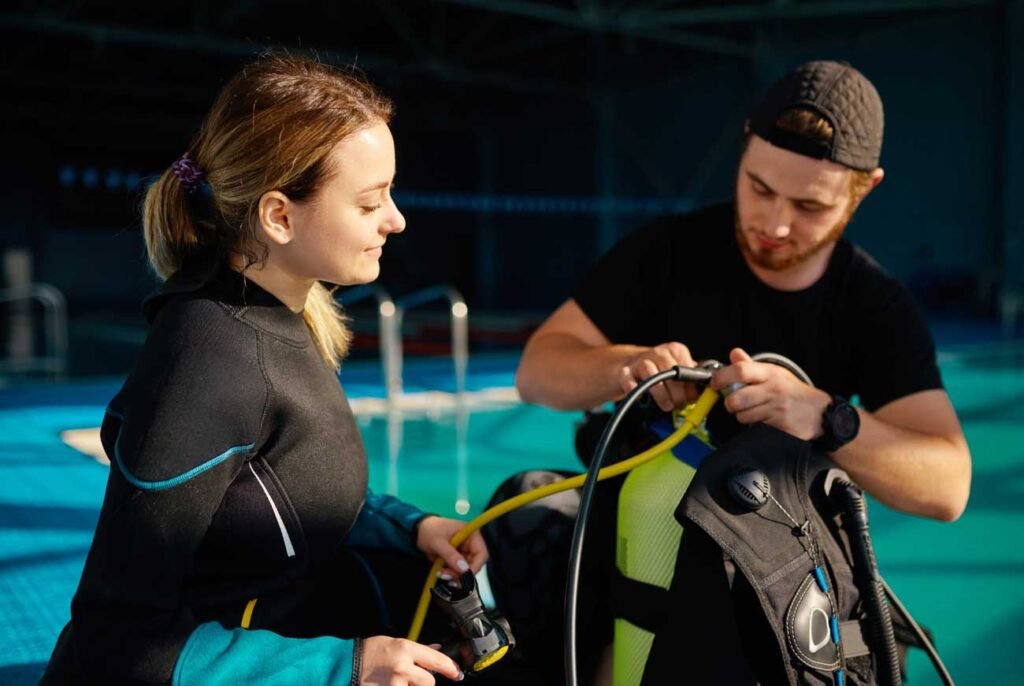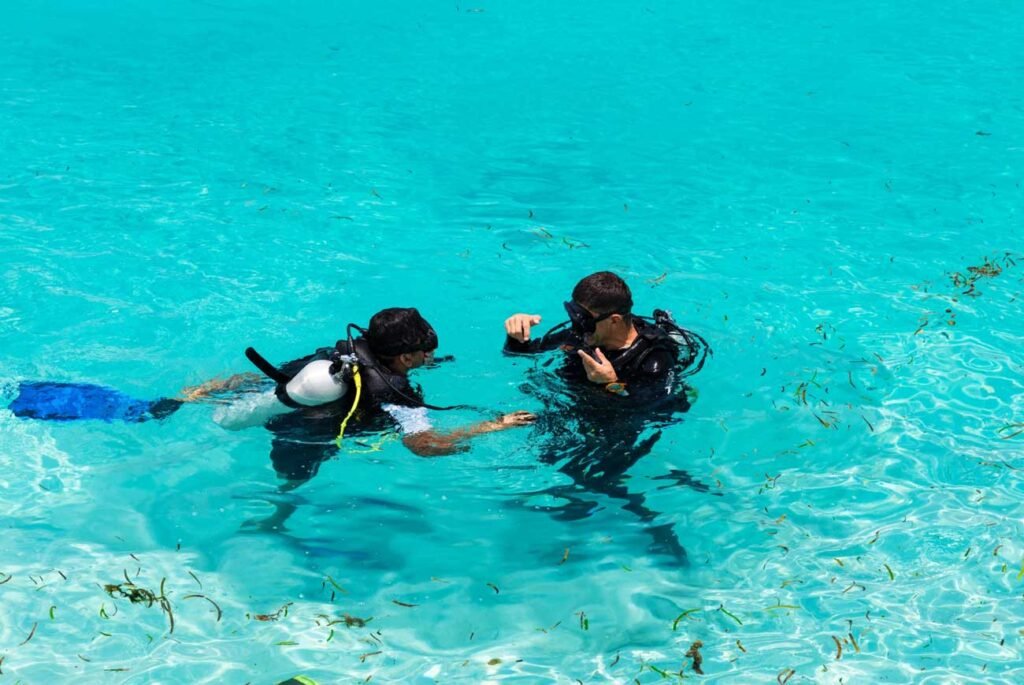Scuba diving in Sri Lanka is more than just an adventure — it’s an invitation into a world of breathtaking diversity and unexpected beauty. As you slip beneath the surface of the Indian Ocean, you enter a realm of silent motion and vibrant colour, where every dive reveals new characters and quiet encounters.
From curious clownfish and graceful sea turtles to elusive reef sharks and colour-shifting octopuses, the marine life here is as rich and welcoming as the island itself. Whether you’re a first-time diver or a returning enthusiast, here’s what you can expect to see — and why you’ll never forget it.
Sea Turtles: Graceful Icons of the Reef
One of the most magical moments for any diver in Sri Lanka is swimming alongside a sea turtle. These calm, majestic creatures seem to move in slow motion, flapping their flippers like wings as they glide effortlessly through the water. Often unbothered by divers, they allow you to come surprisingly close — as long as you remain respectful.
The most common sightings include green turtles, often found resting on the seabed or grazing on seagrass, and the beautiful hawksbill turtles, known for their intricate shell patterns and love for coral reefs. Occasionally, you might even come across the smaller and rarer olive ridley turtles, especially during nesting seasons.
Sri Lanka’s warm coastal waters — particularly around Unawatuna and Trincomalee — provide a safe haven for these gentle residents. Watching a turtle slowly rise to the surface for a breath before sinking back into the reef is an experience that leaves even seasoned divers humbled.
Colourful Reef Fish: A Constant Underwater Ballet
No matter where you dive in Sri Lanka, you’ll be surrounded by colour. The reefs are alive with a kaleidoscope of fish darting between coral branches, weaving through sea fans, and chasing one another in spirals of motion.
Among the most common and beloved are the clownfish, easily spotted peeking out from protective anemones. Parrotfish, with their rainbow-coloured scales and beak-like mouths, add bursts of colour and can be heard crunching coral as they feed. You’ll also see butterflyfish, moorish idols, and countless other reef dwellers moving in pairs or small schools.
The variety is dazzling, but what makes it even more special is how close these fish will come. Many of Sri Lanka’s dive sites are shallow, making them ideal for beginners — and the fish are used to divers, often swimming within arm’s reach. It’s like stepping into a living aquarium where you’re just another part of the scene.
Octopuses, Moray Eels & Cuttlefish: The Masters of Disguise
While the reef fish steal the show with their colour and charm, Sri Lanka’s more secretive marine residents reward those who look a little deeper — into crevices, shadows, and corners of the reef.
Moray eels are often seen poking their heads out of holes in the coral, mouths opening and closing in rhythm as they breathe. Despite their toothy appearance, they’re not aggressive unless provoked and usually just curious observers.
Then there are the octopuses — perhaps the most fascinating of all. With the ability to change colour, texture, and even shape, octopuses blend perfectly into their surroundings. Spotting one in motion is a rare treat, as it shimmers across the reef or squeezes into a rocky nook.
Cuttlefish are equally mesmerising. These alien-looking creatures hover like floating spacecraft, pulsing with changing patterns as they move. Intelligent and alert, they often hold eye contact with divers — a moment that feels oddly personal.
These animals are especially active during night dives, when the reef transforms and the reef’s more elusive life comes out to feed and explore.
Rays: Elegant and Enigmatic
To see a ray glide across the ocean floor is to witness underwater elegance at its finest. With wide, wing-like fins and fluid movements, they seem to fly more than swim.
In Sri Lanka, divers sometimes encounter blue-spotted stingrays resting on the sand, their vivid colours glowing under torchlight. Others may be lucky enough to spot eagle rays in open water — graceful and powerful, moving with effortless rhythm.
Rays tend to be shy and often move away slowly when approached. But their silent presence leaves a strong impression — one of peace and mystery.
Sharks: Mysterious, Misunderstood, and Majestic
Yes, there are sharks in Sri Lanka. And no — they are not dangerous.
In fact, seeing a shark during a dive is one of the most exciting and memorable moments for any diver. These creatures, often feared due to myths and media, are in reality calm, cautious, and deeply important to ocean ecosystems.
The most common encounters in Sri Lanka are with blacktip reef sharks and whitetip reef sharks — both relatively small, typically between 1 to 1.5 metres in length. They tend to keep their distance, curving gracefully at the edges of the reef or resting on sandy bottoms. Many divers see them only briefly, a quick flash of a tail or a gentle silhouette in the blue.
On rarer dives, especially in deeper offshore waters, you may hear of nurse sharks resting in caves, or even catch a glimpse of a whale shark — the world’s largest fish and a completely harmless filter feeder.
Diving with sharks, especially for the first time, can feel like a rite of passage. It’s a powerful reminder that fear fades in the face of knowledge — and that some of the most incredible creatures in the sea are also the most misunderstood.
Small Wonders: Nudibranchs, Seahorses & Macro Magic
Not all the ocean’s marvels are large. In fact, some of Sri Lanka’s most beautiful marine creatures are tiny — and easily missed unless you slow down and look closely.
Nudibranchs, often called “sea slugs,” come in fluorescent colours and ornate patterns. These miniature marvels crawl along coral and rocks, no larger than a fingernail. Seahorses, though rare, may be spotted clinging to seagrass with their curled tails. Cleaner shrimp, tiny crabs, and pipefish hide in plain sight, blending in with their surroundings until revealed by a sharp-eyed guide.
These small creatures are a favourite among photographers and seasoned divers, offering a different kind of reward: a slow, meditative appreciation for the reef’s finer details.
When and Where to See Marine Life in Sri Lanka
Marine life can be seen year-round in Sri Lanka, but your experience will vary depending on the season and coast.
- South Coast (Unawatuna): Best from November to April
- Great for turtles, reef fish, and calm beginner dives
- East Coast (Trincomalee): Best from May to October
- Rich biodiversity, better visibility, and deeper reefs
The type of marine life you see also depends on the dive site and time of day. For example, morning dives might bring out reef activity, while night dives reveal the reef’s hidden hunters and glowing plankton.
How Pearl Divers Enhances Your Marine Life Experience
At Pearl Divers, we do more than guide dives — we help you experience the ocean in full. Our dive guides know the reefs intimately and love pointing out creatures you might miss on your own. Whether you’re searching for turtles, hoping for a shark sighting, or curious about nudibranchs, we tailor each dive to your interests and comfort level.
We offer:
- Expert-led reef and marine life tours
- Night dives for octopus, rays, and glowing plankton
- Beginner-friendly discovery dives
- Speciality experiences like macro photography or shark spotting (when conditions allow)
Your Dive Adventure Starts Here
Every dive in Sri Lanka tells a story — of peaceful turtles, curious fish, silent rays, and the mysterious shadows of sharks. Whether you’re new to diving or ready to deepen your connection with the sea, the marine life of Sri Lanka is waiting.
Let us guide you into this world, one breath at a time. First Dive
